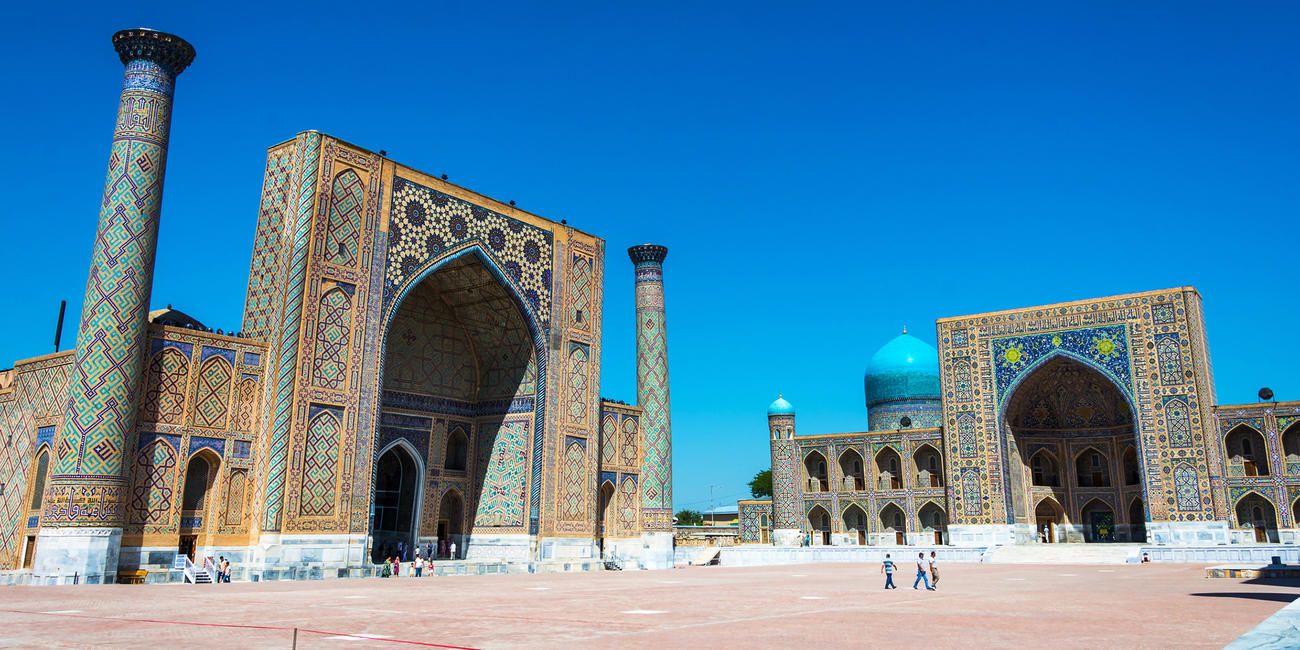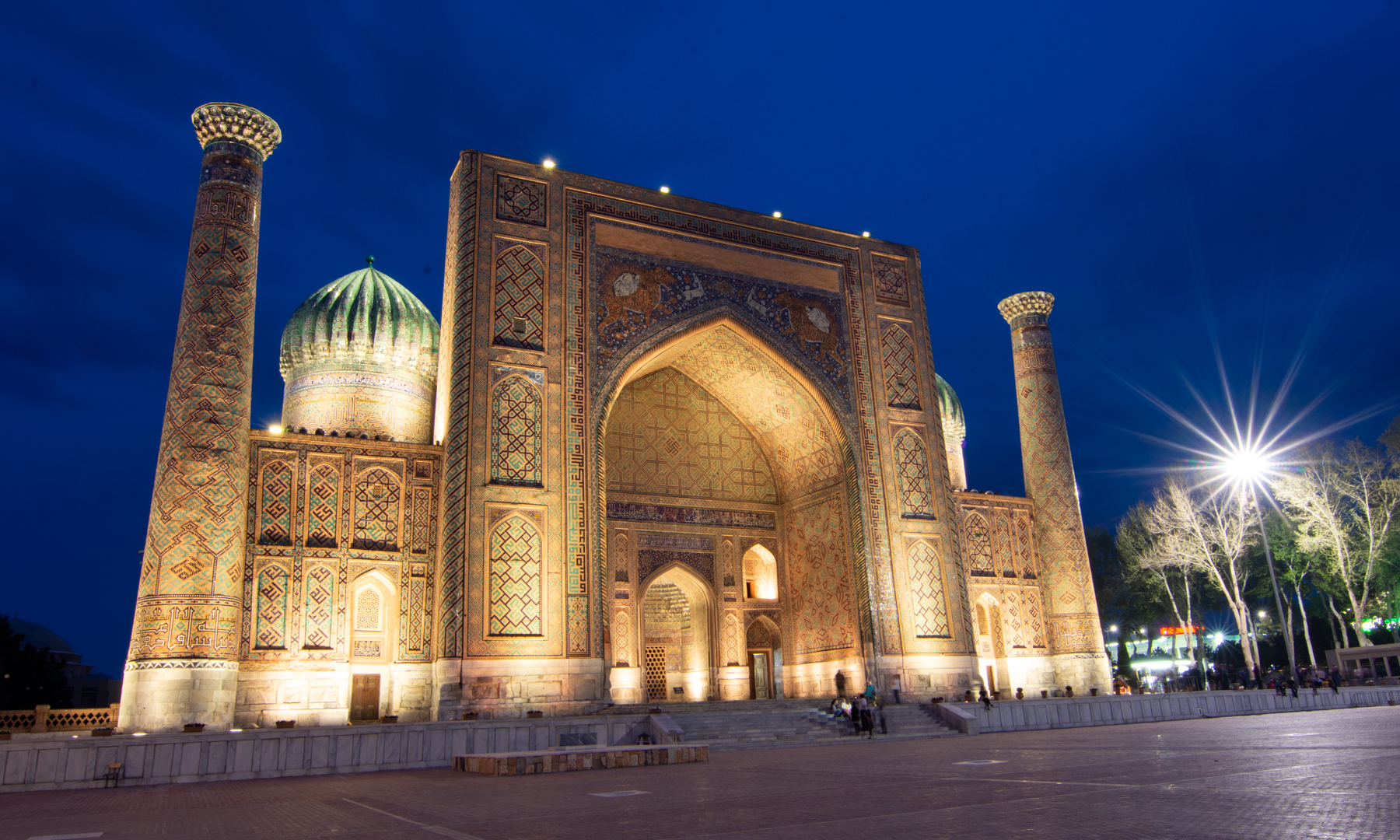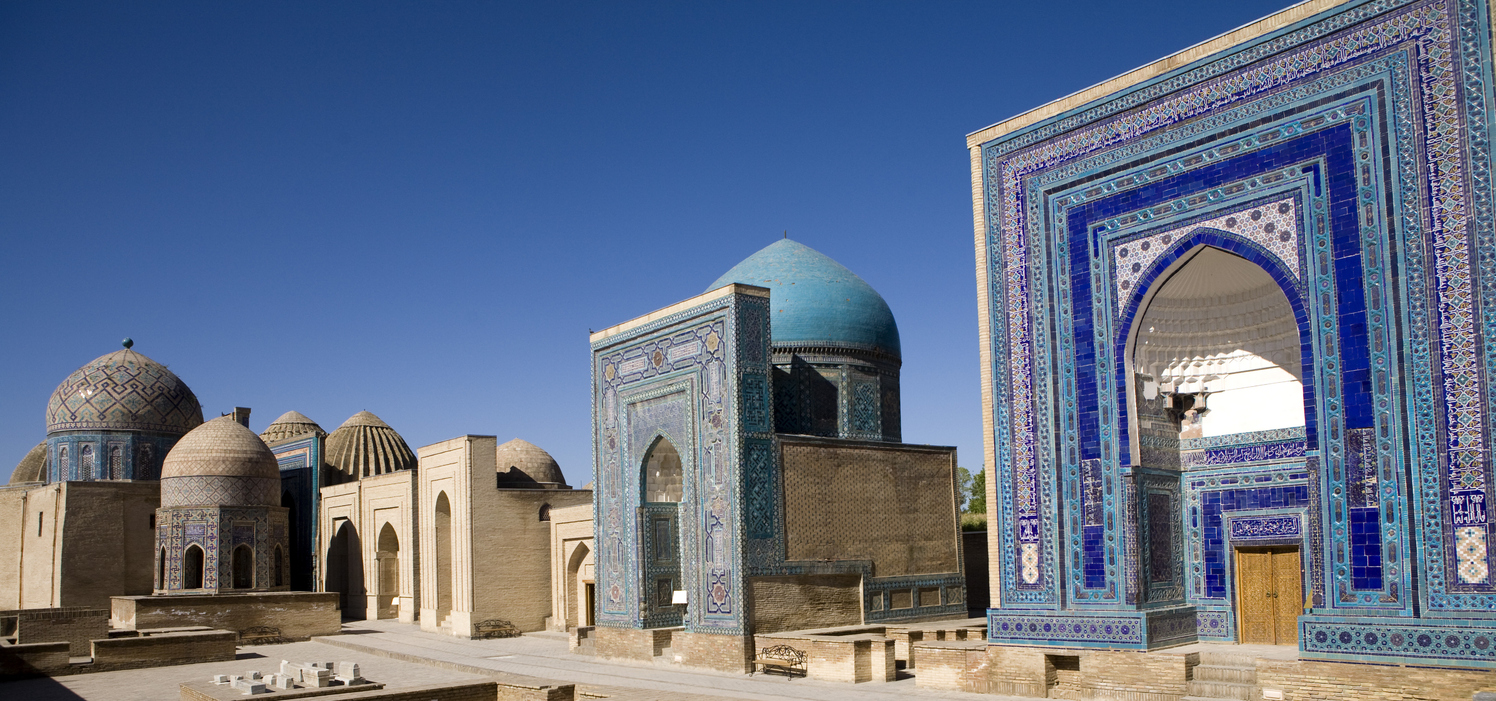
Uzbekistan, a land steeped in legend and drenched in the vibrant hues of history, is a destination that captivates the imagination. For centuries, it lay at the very heart of the Great Silk Road, a bustling nexus where East met West, ideas flowed freely, and magnificent cities rose from the desert sands. Today, this Central Asian gem is opening its doors wider than ever, inviting travelers to discover its breathtaking architectural marvels, delve into its rich cultural tapestry, and experience the warm hospitality of its people. From the shimmering turquoise domes of Samarkand to the labyrinthine alleys of ancient Khiva, Uzbekistan offers an immersive journey back in time, promising an unforgettable adventure into the soul of a truly unique nation.
This article will guide you through Uzbekistan’s most iconic attractions, explore its fascinating history, and provide essential travel tips, accommodation options, transportation advice, and the best time to visit, ensuring your expedition to this storied land is as smooth as it is spectacular.
Top Attractions: Jewels of the Silk Road

Related Articles about Uzbekistan: A Journey Through the Heart of the Silk Road:
- Greece: Where Ancient Wonders Meet Modern Comfort – A Guide to the Best Hotels and Unforgettable Experiences
- Imperial Grandeur and Modern Marvels: A Journey Through Russia’s Finest Hotels and Unforgettable Experiences
- Abu Dhabi: A Symphony of Tradition and Tomorrow
- Maldives: An Azure Dream – Your Ultimate Travel Guide to Paradise
- Discover the Emerald Isle: A Comprehensive Guide to Sri Lanka’s Top Attractions
Uzbekistan’s main draw lies in its triumvirate of ancient Silk Road cities: Samarkand, Bukhara, and Khiva. Each offers a distinct flavor of the past, preserved in an astonishing array of mosques, madrasahs, and mausoleums.
Samarkand: The Jewel of the East
Often called the "Rome of the East" or the "Pearl of the Islamic World," Samarkand is arguably Uzbekistan’s most famous city, synonymous with the grandeur of the Timurid Empire. Its architectural wonders are a testament to the vision of Amir Timur (Tamerlane) and his grandson, Ulugh Beg.
- Registan Square: The undisputed crown jewel of Samarkand, Registan Square is a breathtaking ensemble of three madrasahs – Ulug Bek, Sher-Dor, and Tilla-Kori – arranged around a vast public square. Each structure is an intricate masterpiece of mosaic, calligraphy, and tilework, shimmering with blues, greens, and golds. Stand here at dawn or dusk, and you’ll witness a spectacle of light and shadow that brings history to life. The Ulug Bek Madrasah, built in the 15th century, was one of the finest universities of the Islamic world, where astronomy and mathematics flourished. The Sher-Dor Madrasah, opposite it, mirrors its design but features lion-like creatures (or tigers) chasing gazelles – a rare depiction of living beings in Islamic architecture. The Tilla-Kori Madrasah, meaning "gilded," lives up to its name with a spectacular, gold-leafed interior in its mosque.
- Bibi-Khanym Mosque: Commissioned by Timur after his campaign in India, this colossal mosque was intended to be the largest in the Islamic world, a testament to his ambition and wealth. Though partially ruined by earthquakes over centuries, its sheer scale, enormous blue domes, and towering minarets remain awe-inspiring. Its reconstruction efforts continue to restore its former glory.
- Shah-i-Zinda Necropolis: Known as the "Street of the Dead," this sacred avenue is a vibrant tapestry of mausoleums adorned with some of the most exquisite majolica and terracotta tilework in Central Asia. It’s believed to house the tomb of Kusam ibn Abbas, a cousin of the Prophet Muhammad, making it a significant pilgrimage site. Walking through its narrow lanes, flanked by these ornate tombs, is an ethereal experience.
- Gur-e-Amir Mausoleum: The magnificent final resting place of Amir Timur, his sons, and grandson Ulugh Beg, the Gur-e-Amir is instantly recognizable by its striking fluted azure dome. The interior is a symphony of gold, blue, and green, with intricately carved marble and painted panels, housing the sarcophagi of the Timurid dynasty.
- Ulugh Beg Observatory: Though only the foundations and a massive underground quadrant remain, this site speaks volumes about the scientific prowess of Ulugh Beg, a brilliant astronomer. His observatory, built in the 15th century, was one of the most advanced of its time, allowing him to accurately map the stars and calculate the length of the year.

Bukhara: The Pillar of Islam
Bukhara, a UNESCO World Heritage site, boasts an unparalleled concentration of over 140 protected buildings, offering a more intimate, living museum experience than Samarkand. Its ancient center, with its narrow alleys and bustling bazaars, feels like stepping into a medieval fable.
- Poi Kalyan Complex: The heart of Bukhara, this complex is dominated by the majestic Kalyan Minaret, also known as the "Tower of Death" due to its historical use for executions. Standing at 47 meters, it’s a masterpiece of brickwork, intricate patterns changing with the light. Adjacent are the vast Kalyan Mosque, one of Central Asia’s largest, and the exquisite Mir-i-Arab Madrasah, still a functioning Islamic seminary.
- Lyab-i Hauz Complex: This tranquil square, centered around a 17th-century pond (hauz), is a perfect place to relax and soak in Bukhara’s atmosphere. Flanked by the Nadir Divan-Beghi Madrasah and Khanaka (a Sufi lodge), and the Kukeldash Madrasah, it’s a hub of activity, especially in the evenings when locals and tourists gather at the surrounding chaykhanas (tea houses).
- Samanid Mausoleum: Dating back to the 9th-10th centuries, this small, cube-shaped mausoleum is considered one of the finest examples of early Islamic architecture. Its intricate brickwork, designed to create varying patterns and textures depending on the sunlight, is remarkably preserved and incredibly beautiful.
- Chor Minor: Meaning "Four Minarets," this unique madrasah is known for its distinctively topped four minarets, each with a blue-domed cupola. Tucked away in a residential area, it’s a charming and picturesque departure from the grander complexes.
- Trade Domes (Taqis): Explore the ancient covered bazaars – Taq-i Sarrafon (money changers), Taq-i Telpak Furushon (cap makers), and Taq-i Zargaron (jewelers) – where you can still find traditional crafts, spices, and textiles, much as traders did centuries ago.
Khiva: The Open-Air Museum
Isolated in the Kyzylkum Desert, Khiva’s inner city, Itchan Kala, is a perfectly preserved, walled medieval city that truly feels like a living, breathing museum. Its mud-brick walls enclose a labyrinth of mosques, madrasahs, minarets, and palaces, making it a UNESCO World Heritage site of unparalleled charm.
- Itchan Kala: Simply wandering through the narrow, car-free streets of Itchan Kala is an attraction in itself. Every corner reveals another beautifully tiled facade, towering minaret, or ancient caravanserai.
- Kunya-Ark Citadel: The ancient residence of Khiva’s rulers, this citadel houses a summer mosque, a mint, a reception court, and a harem, offering a glimpse into the lavish lives of the Khans. Climb its walls for panoramic views of the entire Itchan Kala.
- Islam Khoja Minaret and Madrasah: The tallest minaret in Khiva, reaching 57 meters, is distinguished by its vibrant blue and green tiling. Climb to its top for breathtaking views over the city’s mud-brick rooftops and other architectural wonders. The adjacent madrasah is equally striking.
- Juma Mosque: Unique among Central Asian mosques, the Juma Mosque features a roof supported by 213 carved wooden columns, each one different from the others. Its dark, cool interior offers a serene escape from the desert heat.
- Tash-Hauli Palace: Known as the "Stone House," this 19th-century palace was built as an alternative to the Kunya-Ark. It’s renowned for its elaborate courtyards, including the reception court, the entertainment court, and the harem, all adorned with exquisite blue and white tilework.
Tashkent: The Modern Metropolis
The capital city, Tashkent, offers a stark contrast to the ancient Silk Road cities. Rebuilt extensively after a devastating earthquake in 1966, it’s a modern, sprawling metropolis with wide boulevards, green parks, and impressive Soviet-era architecture, yet it still retains pockets of ancient history.
- Amir Timur Museum: Dedicated to Uzbekistan’s national hero, this museum showcases artifacts and exhibits detailing the life and achievements of Timur, his dynasty, and their impact on Central Asian history and culture.
- Chorsu Bazaar: A bustling, dome-covered market that’s a feast for the senses. Here, you can find everything from fresh produce, dried fruits, and spices to traditional clothing, handicrafts, and household goods. It’s an authentic slice of Uzbek life and a great place for people-watching and souvenir hunting.
- Tashkent Metro: Often called "underground palaces," Tashkent’s metro stations are renowned for their ornate Soviet-era design. Each station is uniquely decorated with intricate mosaics, chandeliers, marble, and granite, reflecting themes of Uzbek history and culture. A ride on the metro is a sightseeing experience in itself.
- Khast Imam Complex: This religious complex is the spiritual heart of Tashkent, housing the Tellya Sheikh Mosque, Barak-Khan Madrasah, and the Muyi Mubarak Madrasah, which famously preserves one of the world’s oldest Qurans – the 7th-century Uthman Quran.
- Independence Square: A grand symbol of modern Uzbekistan, featuring the Monument of Independence and the Weeping Mother statue, surrounded by fountains and green spaces.
Shakhrisabz: Timur’s Birthplace
Just a short drive from Samarkand, Shakhrisabz is the birthplace of Amir Timur and another UNESCO World Heritage site. While not as extensive as the major cities, its impressive ruins offer a glimpse into Timur’s original grand designs.
- Ak-Saray Palace Ruins: Though only fragments of the colossal gates remain, the scale of Timur’s "White Palace" is still awe-inspiring. Its massive archway and intricate tilework hint at the grandeur of what was once the most ambitious of his constructions.
- Dorut Tilovat Complex: This complex includes the Kok Gumbaz Mosque (meaning "Blue Dome") and the Gumbazi Seyidan Mausoleum, a beautiful example of Timurid architecture.
- Dorus Saodat Complex: Housing the crypt of Timur and the mausoleum of his eldest son, Jahangir, this complex reveals Timur’s initial plans for his final resting place, though he was ultimately buried in Samarkand.
History: A Tapestry of Empires and Cultures
Uzbekistan’s history is inextricably linked to its position at the crossroads of civilizations. For millennia, it served as a vital artery of the Silk Road, fostering trade, cultural exchange, and the rise and fall of mighty empires.
Its ancient roots trace back to the Sogdians and Bactrians, with cities like Samarkand and Bukhara flourishing long before the Islamic era. The arrival of Islam in the 8th century profoundly shaped the region, leading to a golden age of science, philosophy, and art. The zenith of this cultural explosion came with the Timurid Empire in the 14th and 15th centuries. Amir Timur, a brilliant military strategist, established an empire that stretched from Delhi to Damascus, making Samarkand its magnificent capital. His legacy, along with that of his scholarly grandson Ulugh Beg, is evident in the awe-inspiring architecture that graces cities across the land.
Following the Timurids, the region was governed by various Central Asian Khanates – Bukhara, Khiva, and Kokand – which continued the traditions of Islamic learning and craftsmanship. In the 19th century, these independent states were gradually absorbed into the Russian Empire, and later, following the 1917 revolution, became part of the Soviet Union. The Soviet era brought modernization, industrialization, and significant social and political changes, including the suppression of traditional Islamic practices.
Uzbekistan finally declared its independence in 1991 with the collapse of the USSR. Since then, the nation has been on a journey of rediscovering its rich heritage, rebuilding its economy, and gradually opening its doors to the world, eager to share its treasures with global travelers.
Travel Tips: Navigating Uzbekistan with Ease
To make your trip to Uzbekistan as smooth and enjoyable as possible, consider these practical tips:
- Visa Requirements: Uzbekistan has significantly liberalized its visa policy. Many nationalities (including EU citizens, Canadians, Australians, and others) can enter visa-free for up to 30 days. For others, an easy-to-use e-visa system is available online. Always check the latest requirements for your nationality before travel.
- Currency: The local currency is the Uzbek Sum (UZS). US Dollars and Euros are easily exchanged at banks and official exchange offices in major cities. While ATMs are becoming more common in cities, it’s wise to carry some cash, especially for smaller purchases or when visiting rural areas. Credit cards are accepted in larger hotels and restaurants in Tashkent and Samarkand but less so elsewhere.
- Language: The official language is Uzbek, a Turkic language. Russian is widely spoken, especially among the older generation and in urban centers, and is very useful for communication. English is increasingly understood by younger people and those in the tourism sector, but learning a few basic phrases in Uzbek (e.g., Salom – Hello, Rahmat – Thank you) or Russian can greatly enhance your experience.
- Safety: Uzbekistan is generally considered a very safe country with a low crime rate. However, as with any travel destination, exercise common sense: be aware of your surroundings, especially in crowded bazaars where petty theft can occur, and avoid walking alone in poorly lit areas at night.
- Dress Code: While Uzbekistan is a secular state, it is a predominantly Muslim country. Modest dress is appreciated, particularly when visiting religious sites. For women, this generally means covering shoulders and knees; a headscarf is often required for entry into mosques and mausoleums. Men should also dress respectfully.
- Internet and SIM Cards: Wi-Fi is available in most hotels, guesthouses, and many cafes. For reliable connectivity, consider purchasing a local SIM card (e.g., Ucell, Beeline, Uzmobile) upon arrival at the airport or from official stores. They are relatively inexpensive and offer good 4G coverage in urban areas.
- Local Etiquette: Uzbek hospitality is legendary. Guests are highly valued. Remove your shoes when entering someone’s home or some mosques. It’s polite to offer small gifts. Don’t point with your finger; use an open hand. Greet elders respectfully.
Accommodation Options: From Luxury to Boutique Charm
Uzbekistan offers a growing range of accommodation to suit various budgets and preferences:
- Luxury Hotels: In Tashkent, you’ll find international chains like Hilton and Hyatt, offering modern amenities and services. Samarkand also has several high-end boutique hotels.
- Mid-Range Hotels: Plentiful in all major tourist cities, offering comfortable rooms, good service, and often a blend of modern and traditional design.
- Boutique Hotels and Traditional Guesthouses: This is arguably the most charming option, especially in Bukhara and Khiva. Many guesthouses are renovated historic homes with beautiful inner courtyards, traditional decor, and an authentic, personal touch. Staying in one offers an immersive cultural experience.
- Hostels: Available in Tashkent, Samarkand, Bukhara, and Khiva, providing budget-friendly options for backpackers and solo travelers.
Booking platforms like Booking.com, Agoda, and local travel agencies are useful for finding and reserving accommodation.
Transportation: Getting Around the Land of Blue Domes
Navigating Uzbekistan is becoming increasingly efficient and comfortable:
- International Flights: Most international travelers arrive at Tashkent International Airport (TAS), which has direct flights from various cities in Europe, Asia, and Russia.
- Domestic Flights: Uzbekistan Airways operates domestic flights connecting Tashkent with Samarkand, Bukhara, Urgench (the gateway to Khiva), and Nukus. These are excellent for saving time on longer journeys.
- High-Speed Rail (Afrosiyob): The jewel of Uzbek transportation, the modern, comfortable Afrosiyob train connects Tashkent, Samarkand, and Bukhara rapidly and efficiently. It’s highly recommended for its convenience and scenery. Book tickets well in advance, especially during peak season, as they sell out quickly.
- Standard Trains: Slower and less luxurious than the Afrosiyob, but more economical and connect a wider range of destinations.
- Shared Taxis and Private Drivers: A common and flexible option for inter-city travel, particularly for routes not covered by high-speed rail (e.g., Urgench to Khiva). Always agree on the price before starting the journey.
- Local Transport: In Tashkent, the metro is an efficient way to get around. Taxis are readily available in all cities; ride-hailing apps like Yandex Go are popular in Tashkent. Marshrutkas (minibuses) offer a local, budget-friendly option.
Best Time to Visit: Embracing the Seasons
The ideal time to visit Uzbekistan largely depends on your tolerance for heat and crowds:
- Spring (March to May): This is widely considered the best time. Temperatures are pleasantly mild (15-25°C / 59-77°F), flowers are in bloom, and the landscape is green. Navruz (Persian New Year) on March 21st is a vibrant national holiday with cultural festivities.
- Autumn (September to November): Another excellent period, with comfortable temperatures (15-28°C / 59-82°F) and the harvest season offering an abundance of fresh fruits. The golden light of autumn beautifully illuminates the historic architecture.
- Summer (June to August): Can be intensely hot, with temperatures often exceeding 40°C (104°F). While fewer tourists mean less crowded sites, sightseeing can be challenging. Early mornings and late evenings are the best times to explore.
- Winter (December to February): Cold, with occasional snow, but offers a unique, tranquil experience with far fewer tourists. Prices for accommodation and flights may be lower. The sight of snow-dusted minarets can be magical.
Conclusion: An Unforgettable Odyssey
Uzbekistan is a destination that delivers far beyond expectations. Its ancient cities, vibrant bazaars, and warm, welcoming people weave a tapestry of experiences that are both historically profound and deeply personal. From the intricate geometry of Samarkand’s madrasahs to the timeless charm of Khiva’s walled city, every corner of this nation tells a story of empires, trade, and enduring human spirit. With its growing accessibility and commitment to tourism, there has never been a better time to embark on an unforgettable odyssey through the heart of the Silk Road. Uzbekistan isn’t just a destination; it’s an immersive journey into the soul of a captivating world.





